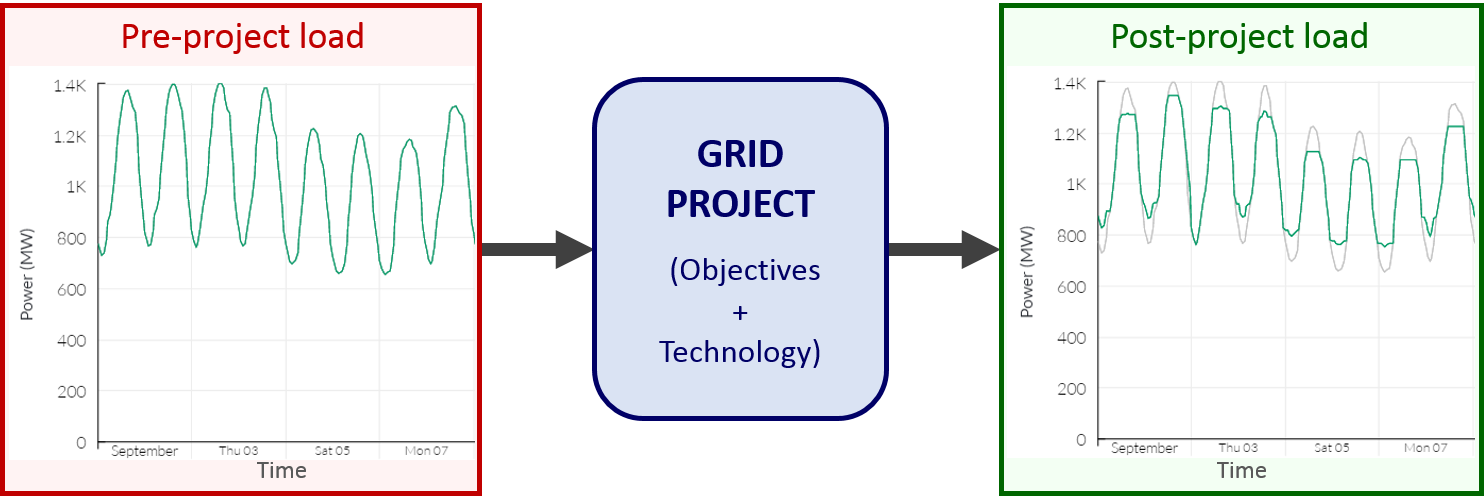Smart grid technology projects are ever more present in the United States power system because of the cost efficiencies they provide. Such grid projects take many forms, all of which apply information technology that enables more visibility and control of both the existing grid infrastructure and new grid assets. That same technology can be leveraged to provide additional benefits like reduced energy consumption, improved reliability, and reduced emissions.
GridPIQ defines a grid project as a technology coupled with the objective driving its use. The screening tool guides users to capture relevant parameters about the project and estimates how that project changes the baseline load profile, before subsequently mapping the change in load profile to the desired impacts.

“The smart grid isn’t a thing but rather a vision… It must be more reliable…more secure…more economic…more efficient…more environmentally friendly…(and) It must be safer. A “smart grid” can be (characterized as) a “transactive” agent…(that) will:
• Enable active participation by consumers…
• Accommodate all generation and storage options…
• Enable new products, services, and markets…
• Provide power quality for the digital economy…
• Optimize asset utilization and operate efficiently…
• Anticipate and respond to system disturbances (self-heal).
• Operate resiliently against attack and natural disaster.
Achieving the vision is dependent upon participant circumstances and involves:
• Empowering consumers by giving them the information and education they need to effectively utilize the new options provided by the smart grid…
• Improved reliability and ‘self-healing’ of the distribution system…
• Integration of the transmission and distribution systems to enable improved overall grid operations and reduced transmission congestion…
• Integration of the grid intelligence acquired to achieving with new and existing asset management applications…”
Source: Smart Grid News, April 22, 2009. What is the smart grid?
